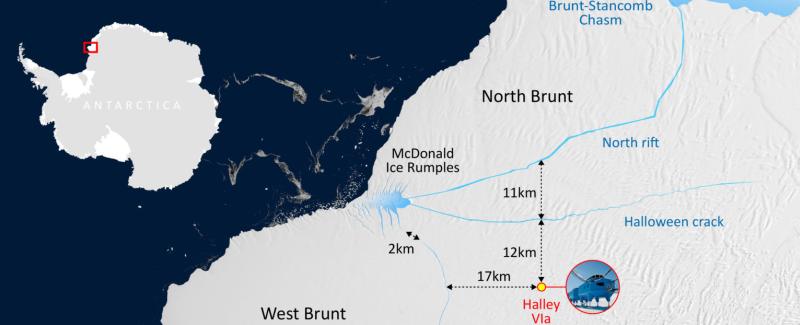 A large iceberg about 490 square miles and about 492 feet thick broke off the Brunt Ice Shelf in the Weddell Sea section of Antarctica yesterday. For comparison purposes, the City of New York is 303 square miles, while Manhattan Island is 23 square miles, so the new iceberg is a bit less than twice the size of New York City but more than 20 times the size of Manhattan.
A large iceberg about 490 square miles and about 492 feet thick broke off the Brunt Ice Shelf in the Weddell Sea section of Antarctica yesterday. For comparison purposes, the City of New York is 303 square miles, while Manhattan Island is 23 square miles, so the new iceberg is a bit less than twice the size of New York City but more than 20 times the size of Manhattan.
While the new berg is indeed big, it is dwarfed by an iceberg that broke off the Larsen Ice Shelf in 2017, which at its largest was measured at some 2,240 square miles. Until it broke up last month, the massive berg was threatening wildlife on South Georgia Island.
Britain’s Halley research station is only about 20 km from the crack in the ice sheet that created the new iceberg. The research station is currently unoccupied.
The iceberg calved from one of a series of cracks and fissures in the Brunt Ice Shelf. Two years ago in 2019, scientists were expecting calving from the “Halloween Crack,” discovered in October of 1916. Despite these expectations, the tip of the Halloween Crack has remained static for the last 18 months.
Then in November 2020, a new chasm, known as the North Rift, opened and started extending towards Brunt-Stancomb Chasm, an existing crack at the northern end of the ice shelf. The crack in the North Rift created the new iceberg.
According to the British Antarctic Survey, the Brunt Ice Shelf is probably the most closely monitored ice shelf on Earth. A network of 16 GPS instruments measure the deformation of the ice and report this back on a daily basis. European Space Agency satellite imagery (Sentinel 2), TerraSAR-X, NASA Worldview satellite images, US Landsat 8 images, ground-penetrating radar, and on-site drone footage have been critical in providing the basis for early warning of changes to the Brunt Ice Shelf.
Brunt Ice Shelf – North Rift flyover (16 February 2021)
Thanks to David Rye for contributing to this post.
